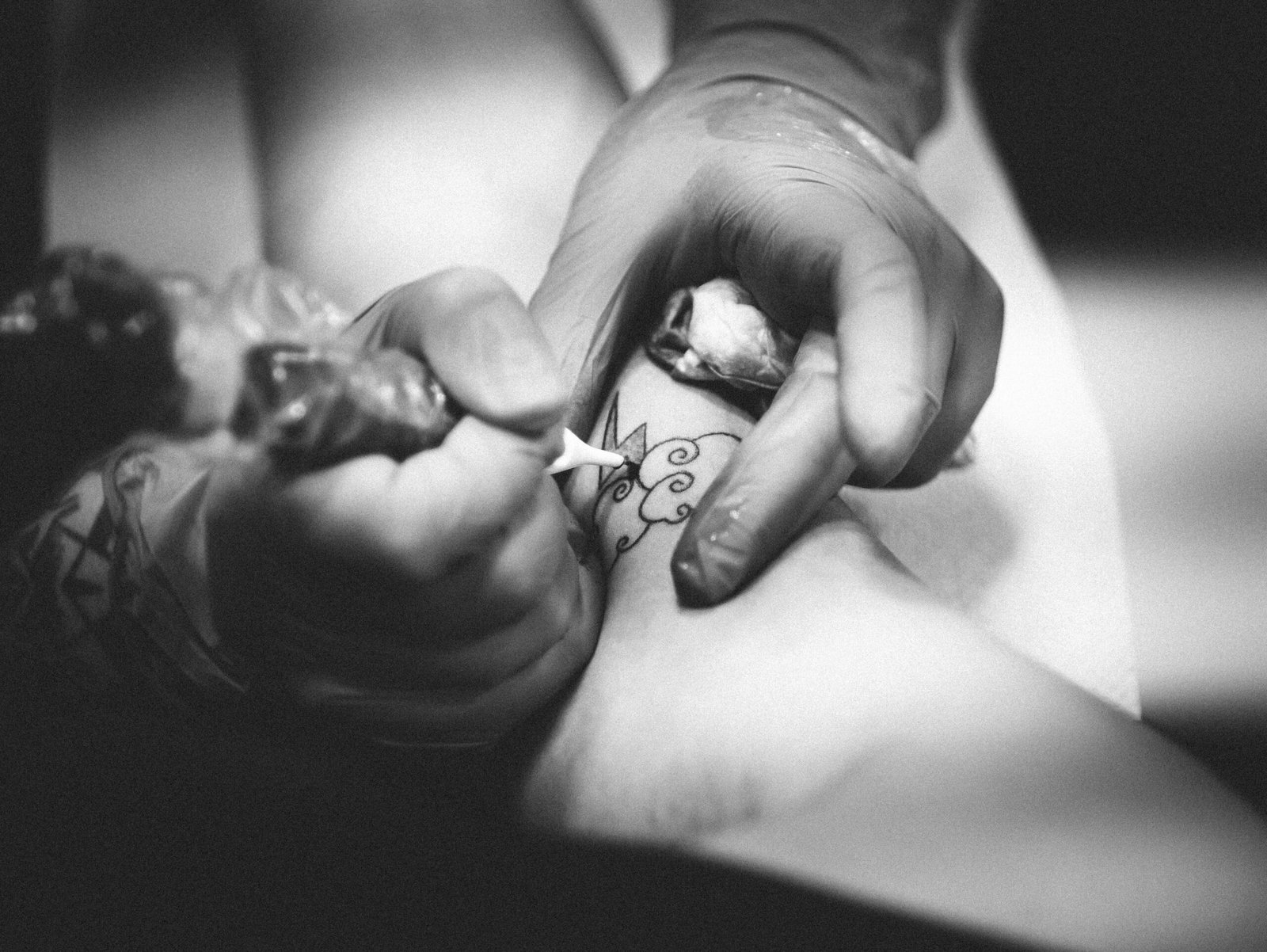Is Pico Laser Best for Tattoo Removal?
Introduction to Tattoo Removal Methods
Tattoo removal, a field once dominated by rudimentary and often painful techniques, has seen considerable advancements over the years. Historically, common methods included dermabrasion, surgical excision, and early laser technologies like Q-switched lasers. Each of these approaches offered unique benefits and came with their respective drawbacks.
Dermabrasion, one of the oldest forms of tattoo removal, involves physically sanding down the skin to remove the ink. While it can be effective for smaller tattoos, the procedure often requires multiple sessions and is known for its considerable discomfort and potential for scarring. Surgical removal, on the other hand, entails excising the tattooed skin and stitching the remaining skin back together. Though effective for very small tattoos, this method is invasive, resulting in noticeable scarring and a longer recovery period.
Entering the spotlight in the last couple of decades, laser technologies, specifically Q-switched lasers, revolutionized tattoo removal. Q-switched lasers use short, high-intensity pulses to break down tattoo ink into smaller particles, which the body’s immune system then removes. However, while Q-switched lasers marked a significant improvement over older methods, they too have limitations. Multiple sessions are often necessary, especially for brightly colored tattoos, which are harder to break down. According to some studies, complete removal satisfaction rates with Q-switched lasers can range from 50% to 75%, depending on the tattoo’s age, ink composition, and color.
Recently, the advent of new technology, particularly Pico lasers, has garnered increasing interest. Pico lasers function similarly to Q-switched lasers but operate at even shorter pulse durations, allowing for more effective ink fragmentation with potentially fewer sessions and less damage to the surrounding skin. This breakthrough has positioned Pico laser as a promising candidate for those seeking more efficient tattoo removal solutions. As a result, the demand for Pico laser treatments is on the rise, reflecting a growing shift towards newer, more advanced tattoo removal methods.
What is Pico Laser and How Does It Work?
Pico laser technology represents a significant advancement in the realm of tattoo removal. At its core, Pico lasers utilize ultra-short picosecond pulses to effectively target and shatter tattoo ink particles. Unlike traditional laser methods, these picosecond pulses operate on a trillionth of a second scale. This rapid energy delivery ensures the ink particles are fragmented into extremely tiny pieces, making it easier for the body’s natural processes to eliminate them.
One of the key technical advantages of Pico lasers is their versatile wavelength options. Different colors of tattoo ink absorb different wavelengths of light. By offering multiple wavelengths, Pico lasers can effectively target a wide spectrum of colors, including stubborn shades that are typically challenging to remove, such as blues, greens, and reds. This makes Pico laser technology particularly beneficial for removing multi-colored tattoos that might not respond well to other treatment methods.
A critical point of differentiation between Pico lasers and traditional Q-switched lasers lies in their pulse duration and energy delivery. While Q-switched lasers emit energy in nanoseconds, Pico lasers deliver energy in picoseconds, which is up to 100 times faster. This ultra-fast delivery allows for more efficient breakdown of ink particles with less thermal damage to surrounding tissues. Consequently, this reduces the risk of side effects such as scarring or changes in skin texture, making the procedure not only more effective but also safer for the patient.
Moreover, the higher peak power output of Pico lasers enhances their ability to target even deeply embedded ink particles that may have resisted previous laser treatments. This technical superiority translates to fewer treatment sessions needed to achieve significant results, underscoring why Pico laser technology is often considered a premier choice for tattoo removal.
The Effectiveness and Safety of Pico Laser for Tattoo Removal
Pico laser technology has emerged as a promising solution for tattoo removal, offering numerous advantages over traditional methods. Clinical studies have consistently demonstrated the efficacy of Pico lasers in breaking down tattoo ink particles more effectively. The ultrashort pulses delivered by Pico lasers are designed to fracture the ink into smaller particles that the body can naturally eliminate, thereby facilitating more efficient removal.
Patient testimonials and dermatologist insights further reinforce these findings, highlighting the high levels of satisfaction among individuals who have undergone Pico laser treatments. Typically, patients may require fewer sessions compared to other tattoo removal methods, such as Q-switched lasers. The exact number of sessions depends on several factors, including the tattoo’s size, ink color, and depth, but many report noticeable fading after just a few treatments.
In terms of safety, Pico lasers present a favorable profile. While some level of skin irritation and temporary discomfort is anticipated, these effects are generally less pronounced than with other tattoo removal techniques. Additionally, the precision and speed of Pico lasers mean that the risk of hypo- or hyperpigmentation is minimized. Scarring, another common concern, is significantly reduced due to the laser’s ability to target ink particles without causing excessive damage to surrounding tissue.
Comparing Pico lasers to alternative methods, such as traditional lasers or dermabrasion, reveals clear advantages in both effectiveness and safety. Traditional lasers often require more sessions and carry a higher risk of side effects, while dermabrasion is more invasive and can lead to substantial scarring.
Before-and-after images of Pico laser treatments vividly illustrate the technology’s capability. These visuals provide compelling evidence of the remarkable progress achieved through Pico laser sessions, showcasing substantial reductions in tattoo visibility with minimal adverse effects.
Cost and Accessibility of Pico Laser Treatments
The financial considerations of opting for Pico laser treatments for tattoo removal are multifaceted, encompassing various factors that influence the overall cost. On average, the cost per session of Pico laser treatments can range from $300 to $500, though this may vary significantly depending on several parameters. Key factors affecting the cost include the size and color of the tattoo, the number of sessions required, and the geographical location of the clinic.
For instance, larger tattoos or those with multiple colors may necessitate more sessions, increasing the total expenditure. Conversely, smaller and monochrome tattoos might require fewer sessions, thus being more cost-effective. The practitioner’s expertise also substantially impacts pricing, with highly experienced specialists typically commanding higher fees.
When comparing Pico laser treatments with other tattoo removal methods, such as traditional Q-switched lasers or alternative techniques like dermabrasion and surgical excision, Pico laser treatments often present a higher initial cost. However, the advanced technology of Pico lasers usually leads to fewer sessions, potentially reducing the cumulative financial burden over the entire treatment course. Additionally, Pico laser treatments are known for their efficacy and minimal downtime, which could translate into longer-term savings in terms of time and recovery.
The availability of Pico laser technology is steadily rising as it gains popularity worldwide. Previously limited to larger, urban centers in developed countries, Pico laser devices are now more frequently found in a broader range of locations, including smaller cities and emerging markets. Despite this increased accessibility, it is crucial for prospective patients to select reputable clinics and practitioners. Factors to consider when choosing a clinic include the practitioner’s credentials, the clinic’s reputation, and patient reviews.
To ensure a successful and safe tattoo removal process, it is advisable to conduct thorough research and even seek multiple consultations before making a decision. Prioritizing clinics that specialize in laser treatments and have certified professionals will likely yield the best outcomes.







